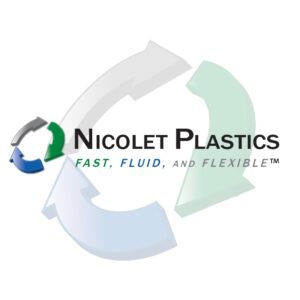January 31, 2024
What Plastic is Used for Injection Molding?
Injection molding is one of the most popular manufacturing processes in use today. It’s used to create various parts with precise dimensions, from small components for electronic devices to larger objects like car bumpers. To make these products, manufacturers rely on a core material: plastic. But what kind of plastic is used for injection molding? Let’s examine several plastic injection molding materials and discuss their unique characteristics and advantages.
Top Injection Molding Materials
Below is a wide range of injection molding material options and their applications:
Acrylic (PMMA)
Acrylic, or PMMA, is a solid but lightweight material with some shatter-resistant properties. It’s often used as an alternative to glass due to its interesting features. Some of its uses include:
- Eyeglass lenses
- Windows
- Solar panels
Acrylonitrile Butadiene Styrene (ABS)
ABS is known for its exceptionally high impact resistance and low melting point, making it relatively easy to mold. It’s also compatible with different colorants while having the ability to achieve various textures and surface finishes. Its typical applications include:
- Pipes
- Automotive body parts
- Keyboard keys
Polyethylene (PE)
Polyethylene comes in two types: High-density polyethylene (HDPE) and low-density polyethylene (LDPE). Both have good chemical resistance but vary in hardness, melting point, flexibility, and transparency.
HDPE is highly flammable but has relatively good strength and sturdiness. LDPE is softer and more malleable but also has poor temperature capability. Some of their uses include:
- Toys
- Shampoo bottles
- Plastic wraps
Polycarbonate (PC)
Another one of the leading plastic injection molding materials is Polycarbonate. It’s ideally used in engineering and has a naturally transparent color. Sometimes, PC is used instead of acrylic due to its ability to maintain physical properties over a wide temperature range. Here are some examples of its common uses:
- Clear or tinted windows
- Bulletproof glass
- Compact discs
Nylon
One of the most versatile injection molding materials is Nylon due to its unique properties and nature. It’s known as a polymer fabric with high heat resistance, abrasion resistance, fatigue resistance, excellent toughness, and good noise-dampening properties. The most notable applications of Nylon include:
- Mechanical parts
- Casings
- Car tires
- Jigs and fixtures
Polyoxymethylene (POM)
Also known as acetal, Polyoxymethylene is a hard engineering plastic material with high rigidity and outstanding thermal stability. It also has good chemical resistance and low water absorption. Its natural color is opaque or white. Some of its uses include:
- Door handles
- Locks
- Fan wheels
- Automotive parts
Thermoplastic Polyurethane (TPU)
TPU is well-known for its rubber-like consistency. It has many desirable properties, such as incredible toughness, flexibility, and wear and tear resistance. It has a higher durometer, so it can sometimes be used as a replacement for rubber. Common uses for TPU include:
- Gaskets
- Footwear
- Mobile phones
- Keyboard protectors
Choose the Right Injection Molding Material for Your Projects
Knowing what plastic is used for injection molding can be beneficial when it comes to injection molding. You can make the right decision once you understand these plastic’s properties and differences. At the same time, follow your injection molding manufacturer’s advice for the best results.
Nicolet Plastics is a reliable plastic injection molding manufacturer that can help you determine the best material for your project. Contact us today to learn more about our services and how we can help bring your ideas to life. Request a quote, and we can give you a cost-effective solution based on your project’s needs!
